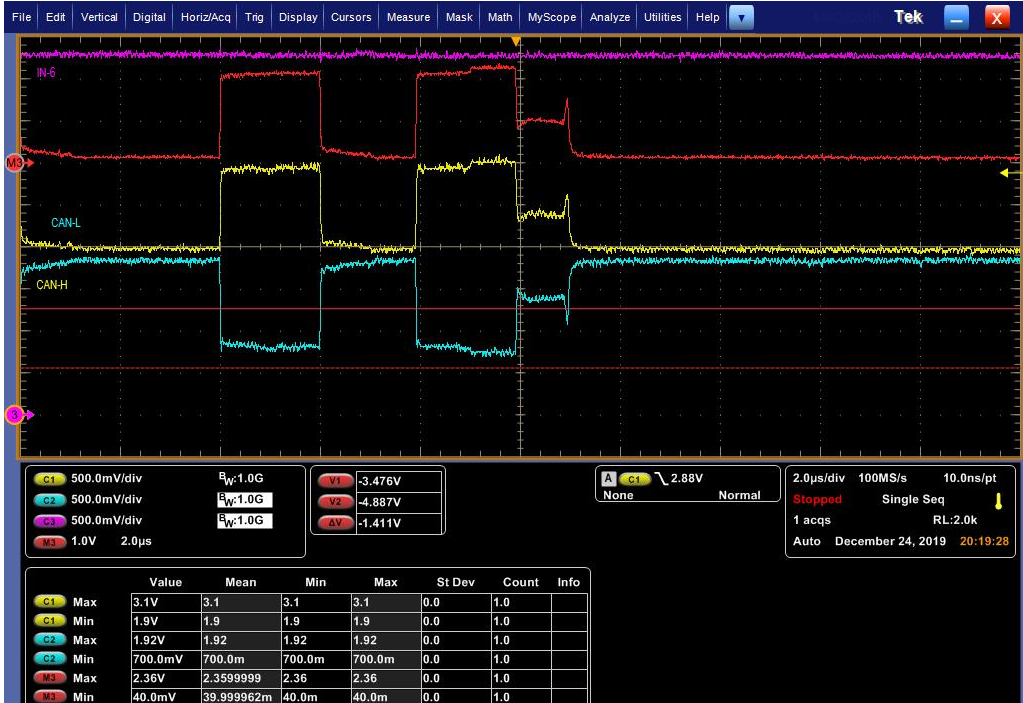Hi team,
really thanks for your help before with the post https://e2e.ti.com/support/interface/f/138/p/867957/3211181#3211181.
We have tested, our assumption is correct. The total system has 10 nodes. Each node ACK is ok. But we find the remote node CAN waveform is a little weird, could you please help check the risk and whether we can improve it?(We test the CAN_H/CAN_L)



